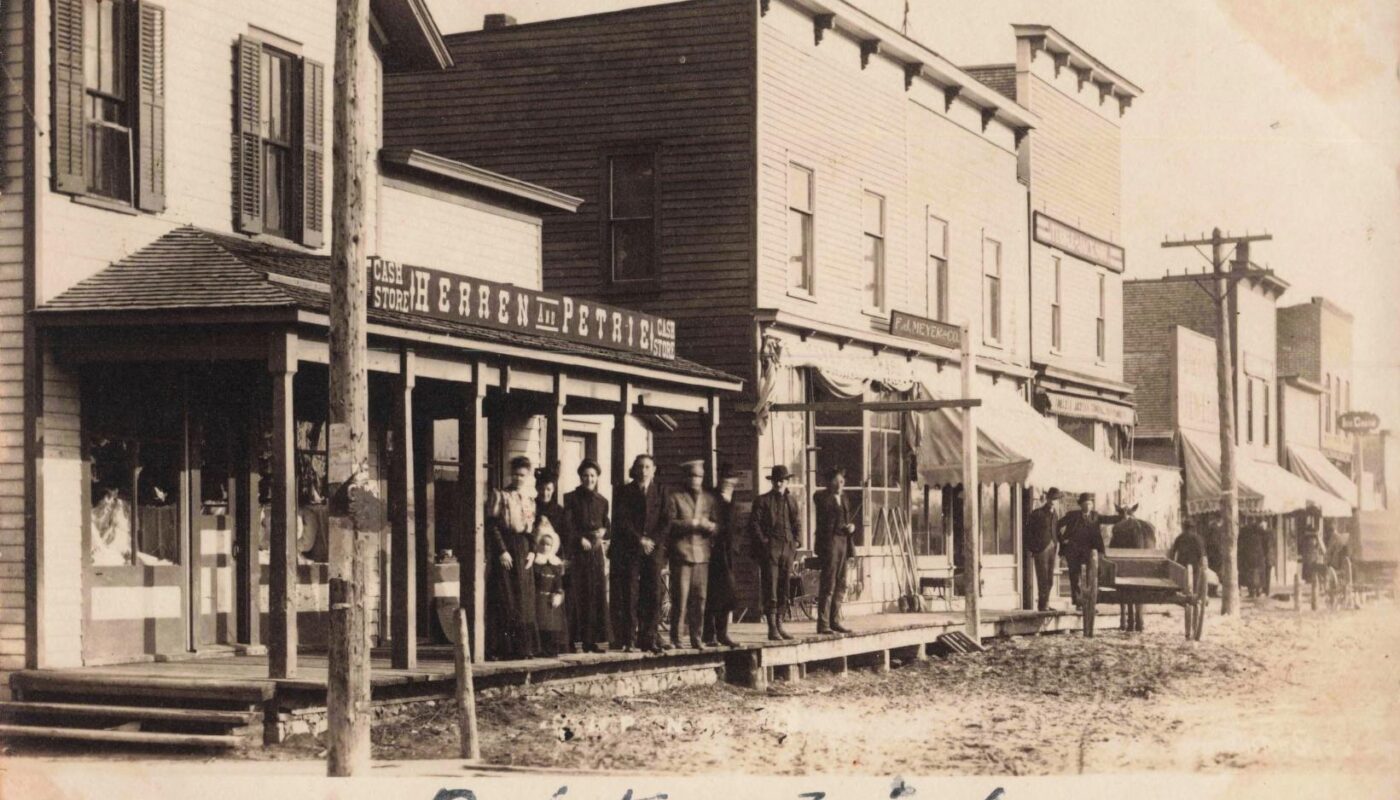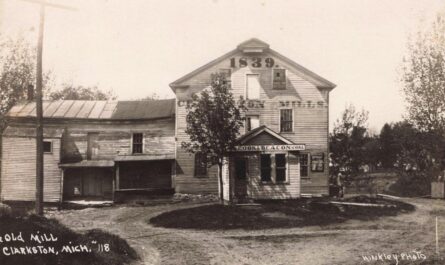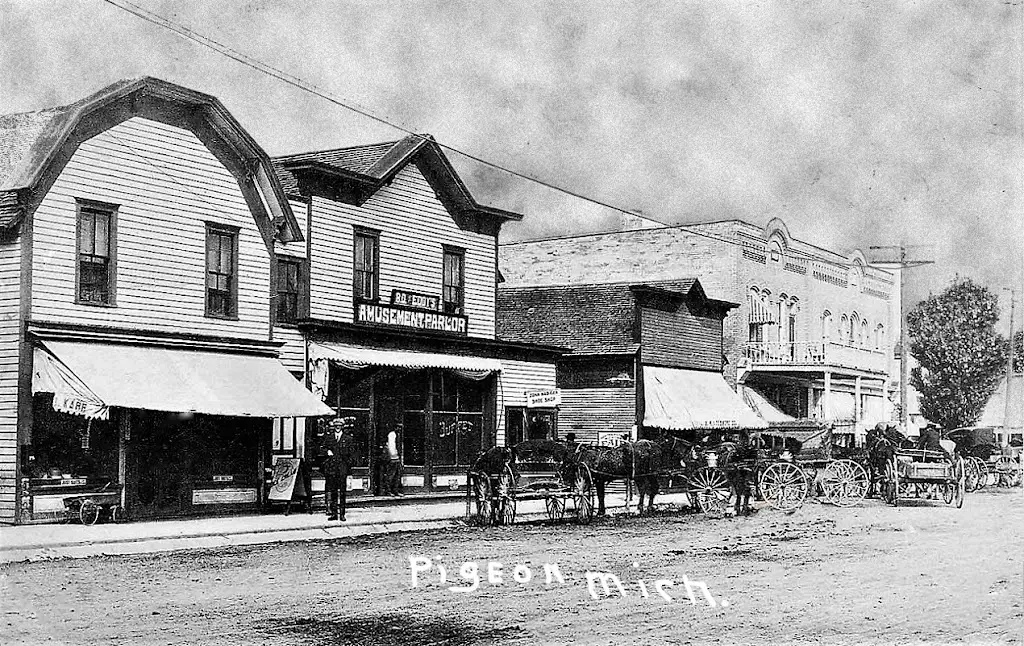The history of Pellston is one of dramatic change in northern Michigan. Born as a logging town along the Grand Rapids & Indiana Railroad, it grew around sawmills, railroads, and taverns that served the lumber trade. By the mid-20th century, Pellston had shifted from timber to tourism, becoming a gateway for vacationers heading to the lakes and resorts of Emmet County.
A Town Carved from the Forest
The history of Pellston, Michigan begins in the early 1880s, when the Grand Rapids & Indiana Railroad extended its line northward through Emmet County. The stop was little more than a flag station at first, but within just a few years Pellston had a population of fifty people, two sawmills, a general store, and a hotel. The town was born of timber, and its future was tied to the lumber trade.
Video – Pellston, Michigan History: From Logging Camps to Tourist Gateway
The Rise of Jackson & Tindle
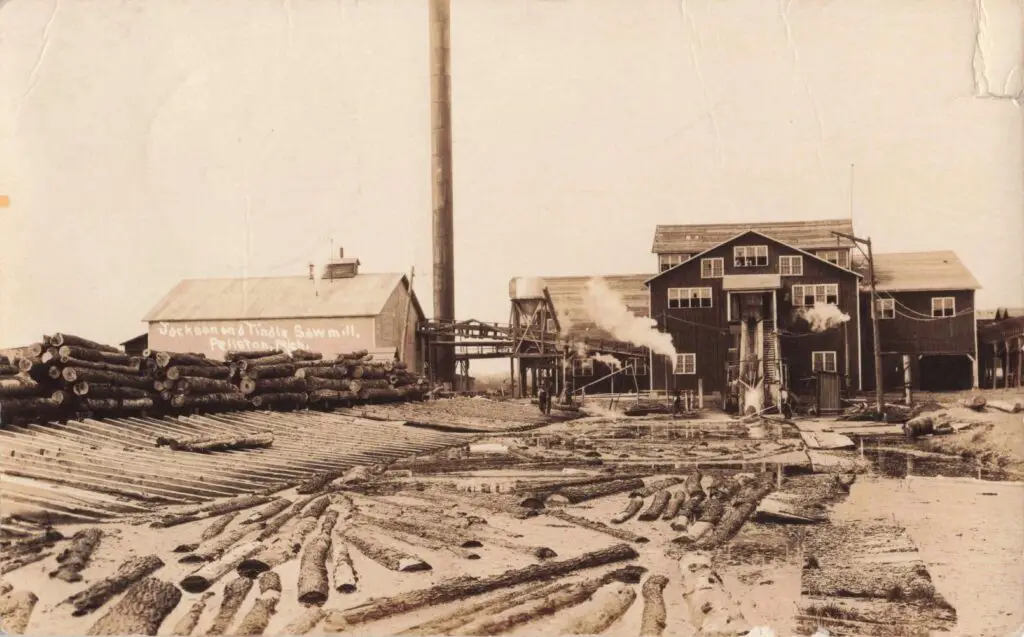
In the late 19th and early 20th centuries, the Jackson & Tindle Company defined Pellston’s growth. Their massive sawmill on the Maple River could process staggering amounts of pine. To feed the mill, the company built its own railroad — the Tindle & Jackson line — in 1907. This line extended westward into the dense forests, bringing back car after car of logs.
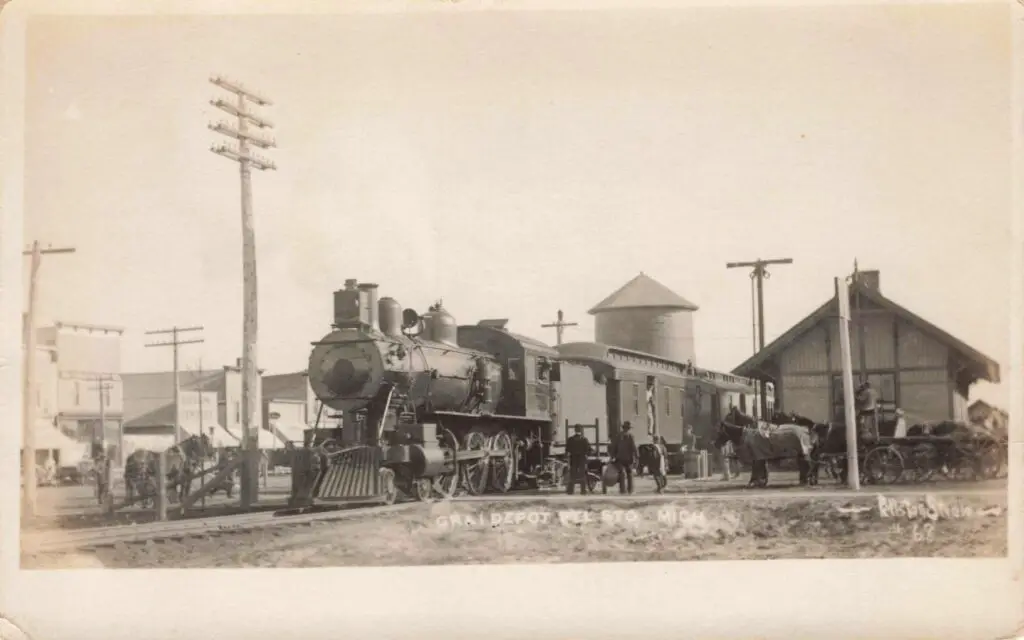
The railroad also connected Pellston to larger markets. By the early 1900s, trains hauled lumber south while passenger cars carried new workers north. Sawmills buzzed day and night, powered by steam and even an early hydroelectric dam built by Charles Bogardus. Pellston’s streets were filled with loggers, dray lines, and freight wagons.
A Bustling Main Street
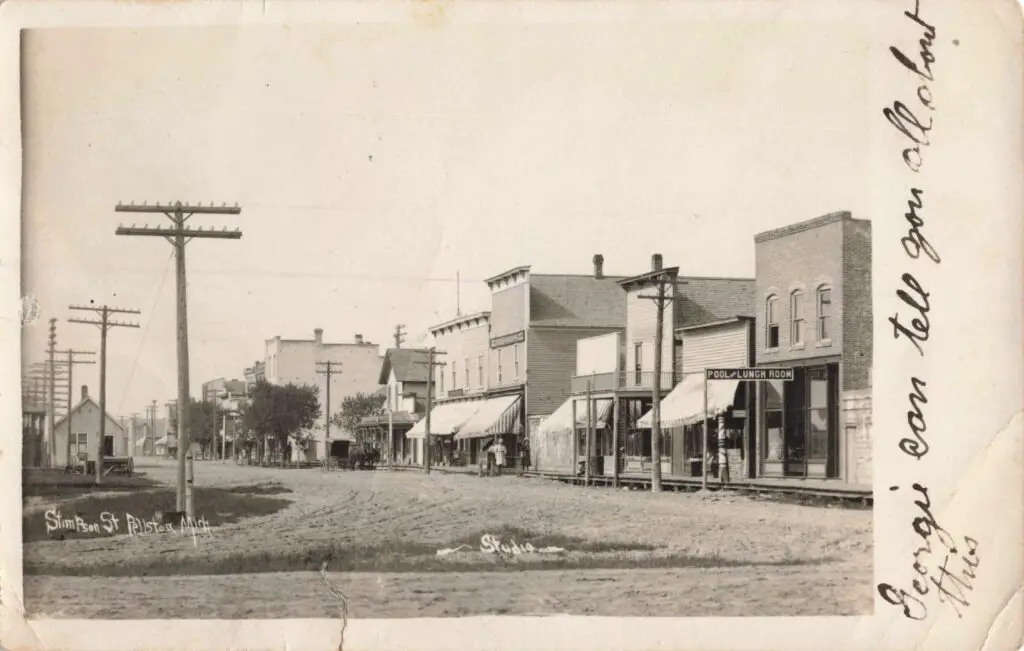
As the mills prospered, so did Pellston’s business district. Stores, boardinghouses, taverns, and small hotels sprang up along Main Street. The Hotel Pellston, built around 1908, catered to travelers and businessmen. Cafés like John’s Little Tavern offered meals and ice cream, and general stores carried everything from axes to canned goods.
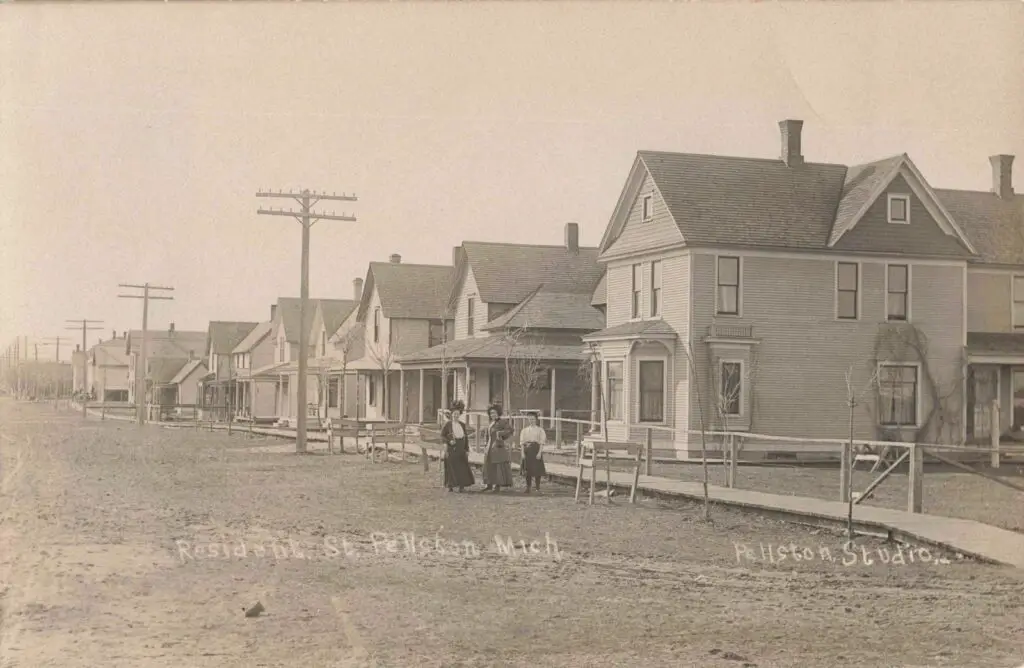
The town also had its colorful side. Boardinghouses filled with lumbermen during the week, while taverns stayed lively late into the night. On weekends, dance halls and music gave the community a place to gather. Pellston may have been a lumber town, but it was also a community where families built lives around the rhythm of the mills and trains.
The End of the Lumber Era
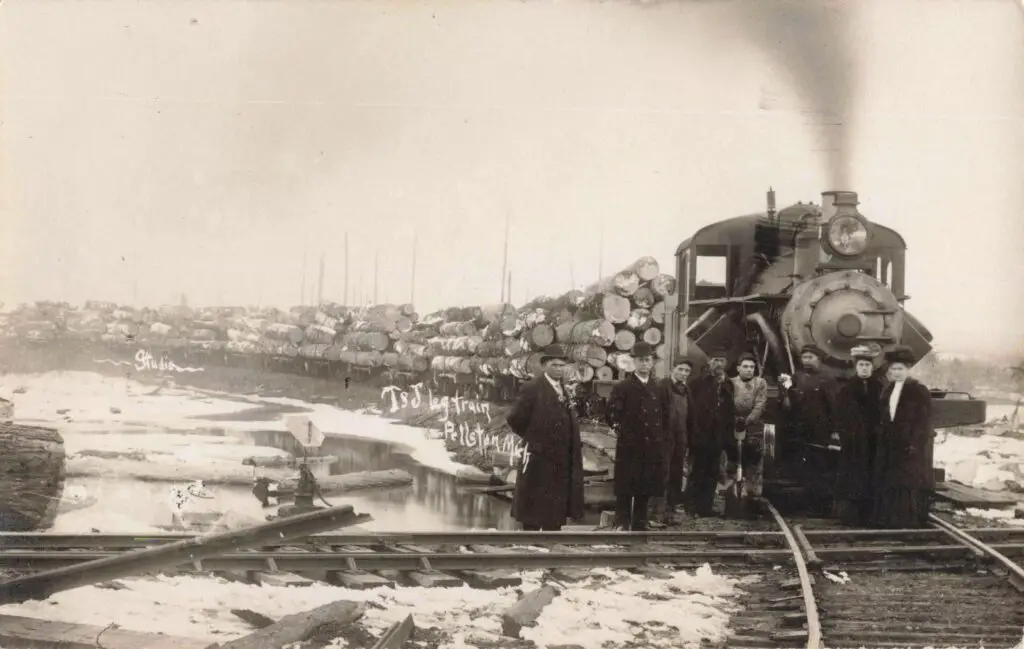
By the 1920s, the forests were largely cut over. The great white pines were gone, and the sawmills began to close. The Tindle & Jackson railroad, once the lifeblood of the town, was dismantled. Without the endless flow of logs, Pellston faced economic uncertainty.
But the end of one era opened the door to another. The woods and lakes that had been exploited for timber began attracting a new kind of visitor — the tourist.
From Logging Camps to Tourist Cabins
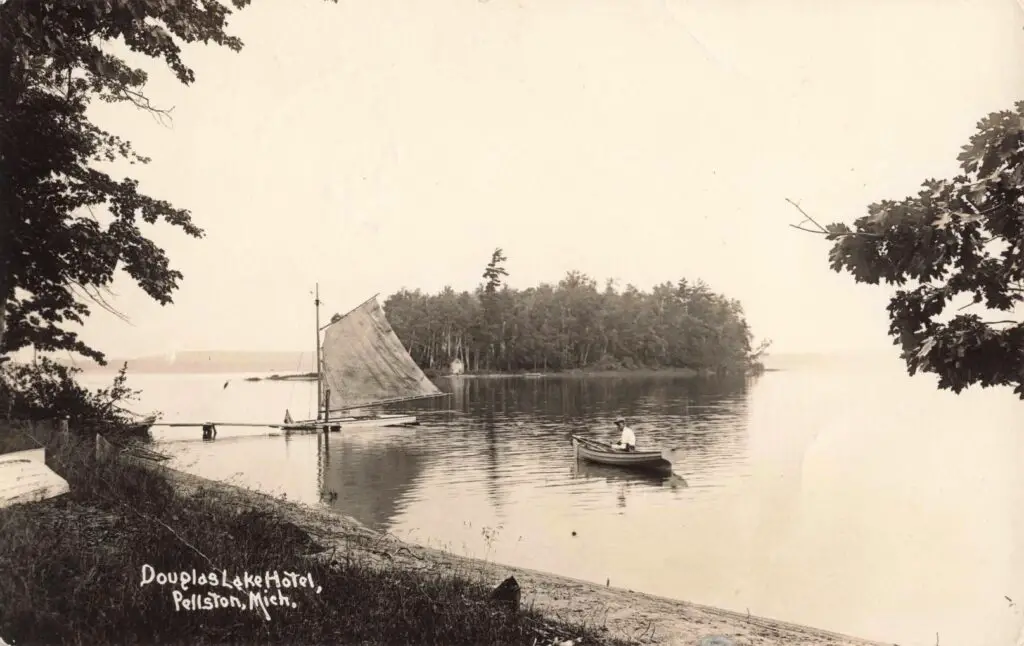
During the 1920s and 1930s, Pellston transitioned into a gateway for vacationers. Nearby Douglas Lake became a favored destination for fishing and summer cottages. Resorts and lodges opened in place of lumber camps. Visitors arrived by train, seeking cool air and quiet escapes from the cities of Detroit and Chicago.
By mid-century, the airport in Pellston linked the community to travelers from across the Midwest. Instead of freight trains loaded with logs, the town now welcomed families with fishing rods, golf clubs, and picnic baskets.
Pellston’s Legacy
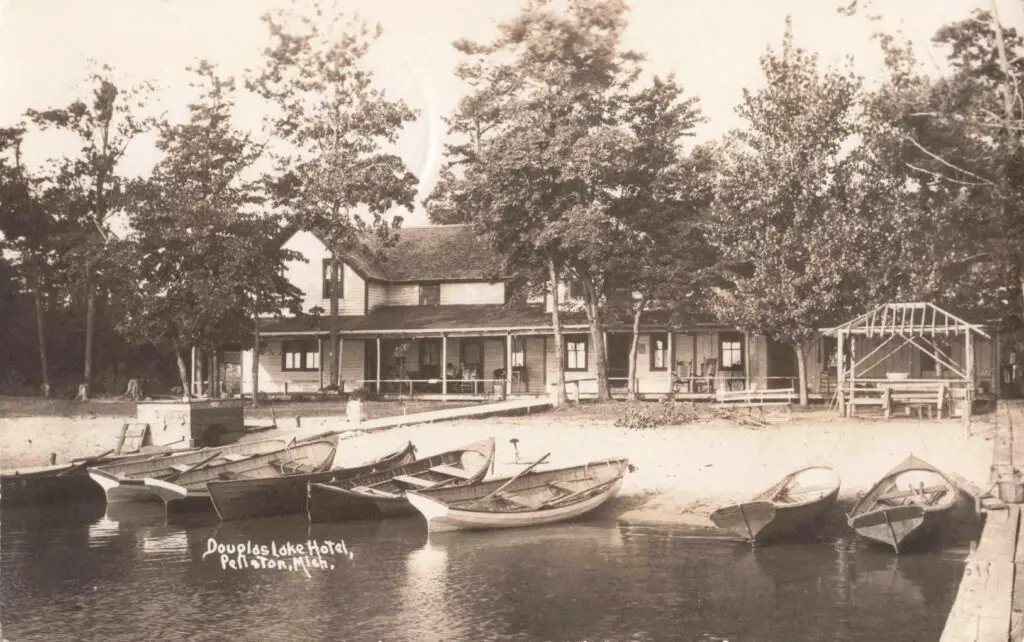
Today Pellston is often remembered for its chilly winters, earning the nickname “Ice Box of the North.” But its history tells a broader story. It was first a lumber hub built on steam and sawdust, then a small-town commercial center, and finally a doorway to Michigan’s northern vacationland.
The history of Pellston Michigan is a reflection of the larger changes that shaped the state itself — from logging to tourism, from natural resource extraction to recreation.
Final Thoughts About The History of Pellston
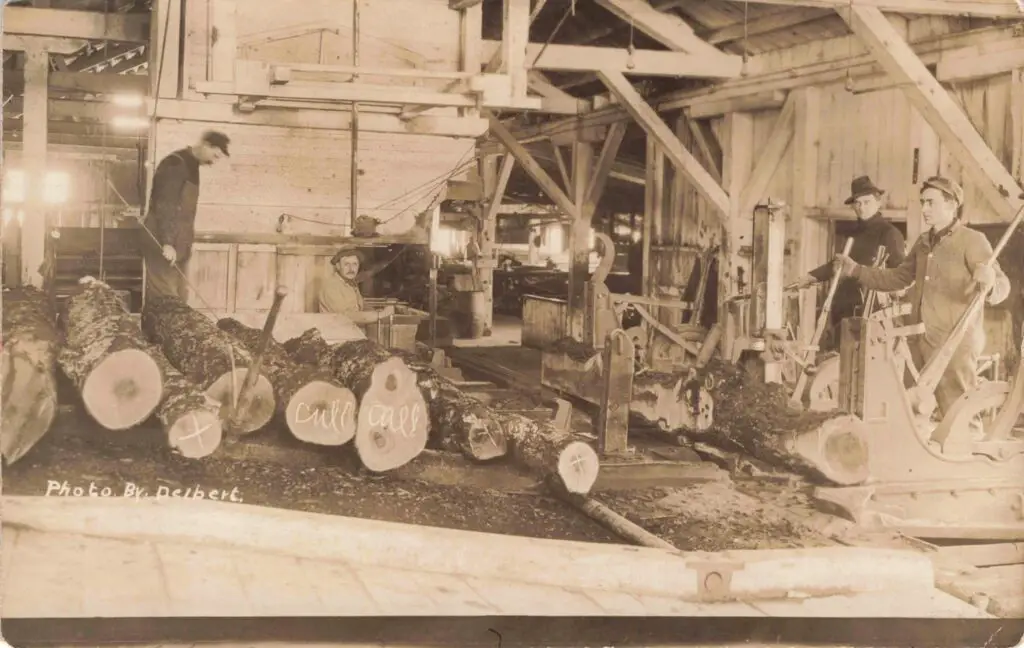
Pellston may not look like the bustling lumber town of the early 1900s, but echoes of its past remain in old buildings, railroad remnants, and stories passed down through generations. It is a community shaped by change, with roots in the forests and a future tied to the lakes.
Works Cited
- “Emmet County: Early Settlement and Lumber Era.” Michigan Pioneer & Historical Collections. Accessed September 2025.
- “Grand Rapids & Indiana Railroad in Emmet County.” Railroad History of Michigan.
- “Jackson & Tindle Lumber Company Records.” Emmet County Historical Society.
- McClurken, James M. Logging in Northern Michigan. Michigan State University Press, 1995.
- “Pellston: Ice Box of the North.” Petoskey News-Review, August 2010.
- Powers, Tom. Michigan’s Lumbering Era. University of Michigan Press, 2001.
- “Tourism Development in Northern Michigan.” Michigan History Magazine, Summer 2018.
